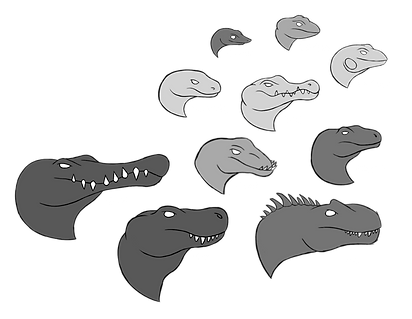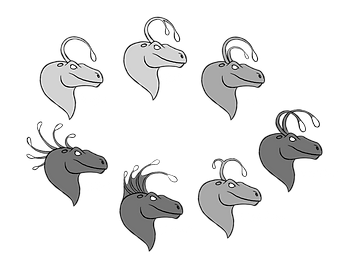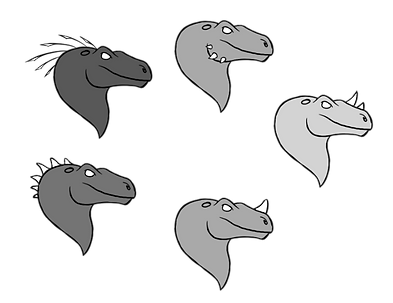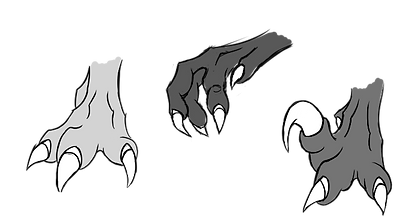
Snapraptors
Species Traits
Below are the different traits you can choose from when designing a MYO Snapraptor. Some of these traits can be mixed-n-matched to create unique effects, and some things, like fin shape and placement, are entirely up to you.
Please see the Design Rules page before you begin so you know exactly what is expected.
You cannot make your own Snapraptor without an official MYO slot.
Breeds
The various "breeds" were not distinguished until the human settlers came to Tyl. The humans named them after the earth species they resemble.
Each breed has a general size range they can be, divided into 'size classes'
Pygmy: 4' - 5' | Standard: 5' - 7' | Monster: 7' - 8'
Breeds aren't limited to just the styles shown here!

Lure Types
All Snapraptors have at least one glowing lure on their heads. This is the the first light they will use to communicate when verbal cues are inaccessible.
Even deaf or mute Raptors have very little trouble communicating basic emotions through this flashing.

Ear Types
While earless is by far the most common type you'll see, Snapraptors can have external ears and they come in a variety of shapes.
These traits can be mixed & Matched.

Fins & Tails


The fins and tails of Snapraptors are perhaps the most diverse set of traits. Pretty much anything goes here, the fancier the fins the rarer they are (canonically). Fins can be modeled after any shark, fish, eel, or sea serpent, or can be made-up shapes!
The only restrictions are no octopus / jellyfish tails, or tails resembling marine mammals. (whales, dolphins, seals, etc)
All raptors must have pelvic fins.
(2 fins on the tail, directly behind the legs)
Skin Types
Scutes
Skin like an Earth Crocodile.
High defense, medium tolerance for drying out.
Scales
Skin like an Earth Python.
Medium defense, high tolerance for drying out.
Smooth
Skin like an Earth Catfish.
Low defense, low tolerance for drying out, but able to secrete a (very thin) layer of slime that reduces drag and makes them quicker in the water.

Horns & Quills
Small horns and quills can come in a variety of shapes and patterns, and are not limited to the face! Quills on a 'Komodo' breed Snap will be venomous!
Feet & Claws

Snapraptor feet have 3 forward facing toes and one dew claw on the inside. The thickness of the toes vary; they can be more dinosaur-y or thinner and more chicken-y. As long as the basic anatomy is correct.
They may also have spurs on the back of their heels.
